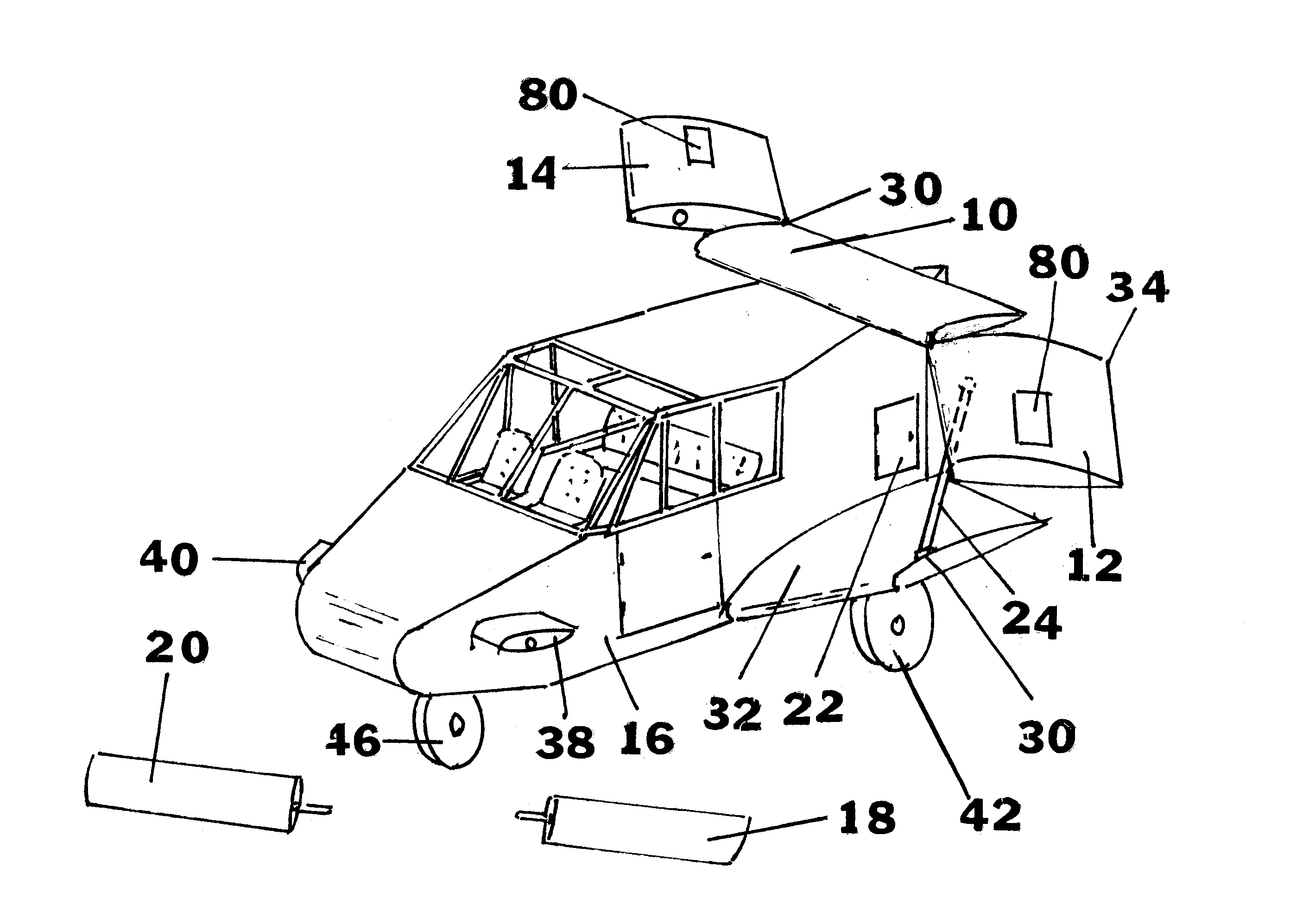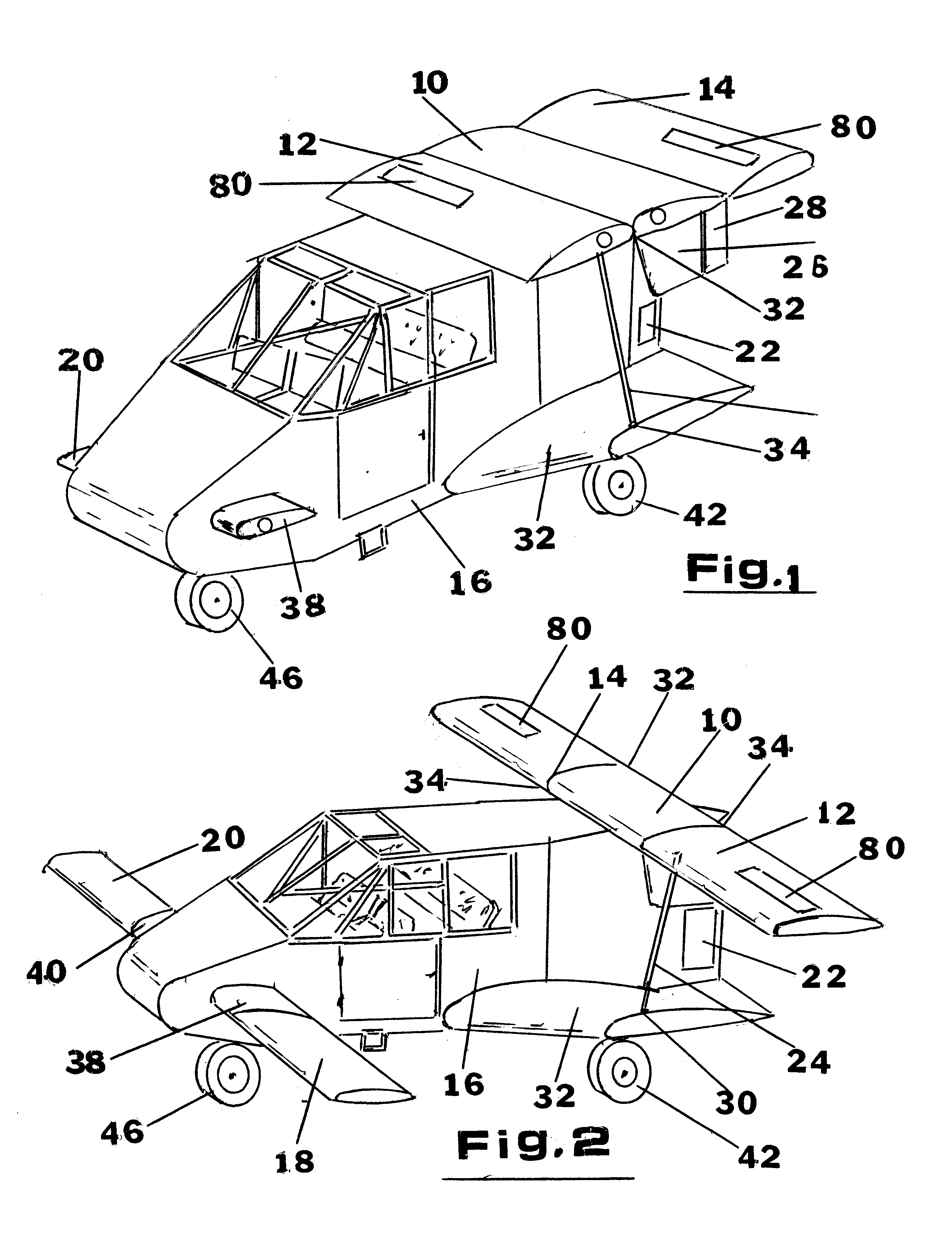Rapidly-convertible roadable aircraft
a technology of roadable aircraft and convertible wings, which is applied in the direction of canard-type aircraft, transportation and packaging, efficient propulsion technologies, etc., can solve the problems of failure to achieve practical success, large wing surface area, and additional heavy weight of flying cars, so as to reduce drag, reduce wing exposure, and small hangar space
- Summary
- Abstract
- Description
- Claims
- Application Information
AI Technical Summary
Benefits of technology
Problems solved by technology
Method used
Image
Examples
Embodiment Construction
)
Referring to FIG. 1, a roadable aircraft embodying the invention is shown generally converted for road use with a center main wing section 10, outer main wing sections 12 and 14 stored on the upper surface of a fuselage 16. Outer canard sections 18 and 20, not shown, are stored within the fuselage 16, entry being made through access panels 22. Wing struts 24 are used to assist in the main wing rotation and also in support during road use and in flight. A vertical stabilizer 26 with a rudder 28 is shown affixed to the underside main center wing 10. A second (twin) vertical stabilizer and rudder is not shown. Drag panels 80 shown would not be used if the vertical stabilizer 26 and the rudder 28 are used. Of importance is the location of the strut 24 pivot point 30 on a fuselage lifting surface 32 which strut 35 supports and guides the main wing outer sections 12 and 14 for stowing.
Referring to FIG. 2, a roadable aircraft is shown ready for flight. The main wing outer sections 12 and ...
PUM
 Login to View More
Login to View More Abstract
Description
Claims
Application Information
 Login to View More
Login to View More - R&D
- Intellectual Property
- Life Sciences
- Materials
- Tech Scout
- Unparalleled Data Quality
- Higher Quality Content
- 60% Fewer Hallucinations
Browse by: Latest US Patents, China's latest patents, Technical Efficacy Thesaurus, Application Domain, Technology Topic, Popular Technical Reports.
© 2025 PatSnap. All rights reserved.Legal|Privacy policy|Modern Slavery Act Transparency Statement|Sitemap|About US| Contact US: help@patsnap.com



